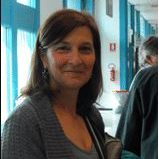Macrophage Polarization: Learning to Manage It 3.0
A special issue of International Journal of Molecular Sciences (ISSN 1422-0067). This special issue belongs to the section "Molecular Immunology".
Deadline for manuscript submissions: closed (15 April 2024) | Viewed by 49675
Special Issue Editor
Interests: inflammation and innate immunity; macrophages polarization; osteoimmunology
Special Issues, Collections and Topics in MDPI journals
Special Issue Information
Dear Colleagues,
Macrophages are crucial components of innate immunity. They possess high plasticity and the ability to differentiate in response to numerous stimuli. The physiological and/or pathological conditions characterize the environment in which the macrophages reside, and determine their heterogeneity. There is a plethora of different specialized functional phenotypes, among which inflammatory (M1) and reparative (M2) subtypes are proposed, which are almost exactly opposite to each other. Two key cytokines, IFN-γ and TNF-α, are responsible for M1, or classical activation, while alternate activation in M2 is mediated mainly by IL-4 and IL-13. Interestingly, microRNAs and some immunomodulators are critical regulators of macrophage polarization. The link with many human diseases and infections, including cancer, autoimmunity, and periodontitis, is to be found in the dysregulation of macrophage plasticity. Furthermore, recent studies on naturally occurring compounds emphasize their regulatory effects on macrophage polarization, suggesting that some of them could be promising for the treatment of sensitive diseases.
This Special Issue aims to cover all areas of molecular research, but is not limited to this, as it may include clinical studies with biomolecular experiments.
Dr. Nadia Lampiasi
Guest Editor
Manuscript Submission Information
Manuscripts should be submitted online at www.mdpi.com by registering and logging in to this website. Once you are registered, click here to go to the submission form. Manuscripts can be submitted until the deadline. All submissions that pass pre-check are peer-reviewed. Accepted papers will be published continuously in the journal (as soon as accepted) and will be listed together on the special issue website. Research articles, review articles as well as short communications are invited. For planned papers, a title and short abstract (about 250 words) can be sent to the Editorial Office for assessment.
Submitted manuscripts should not have been published previously, nor be under consideration for publication elsewhere (except conference proceedings papers). All manuscripts are thoroughly refereed through a single-blind peer-review process. A guide for authors and other relevant information for submission of manuscripts is available on the Instructions for Authors page. International Journal of Molecular Sciences is an international peer-reviewed open access semimonthly journal published by MDPI.
Please visit the Instructions for Authors page before submitting a manuscript. There is an Article Processing Charge (APC) for publication in this open access journal. For details about the APC please see here. Submitted papers should be well formatted and use good English. Authors may use MDPI's English editing service prior to publication or during author revisions.
Keywords
- macrophages
- macrophage plasticity
- macrophage polarization
- innate immunity
- IFN-γ
- TNF-α
- immunomodulators
- diseases
- homeostasis
- inflammation
- cancer
Benefits of Publishing in a Special Issue
- Ease of navigation: Grouping papers by topic helps scholars navigate broad scope journals more efficiently.
- Greater discoverability: Special Issues support the reach and impact of scientific research. Articles in Special Issues are more discoverable and cited more frequently.
- Expansion of research network: Special Issues facilitate connections among authors, fostering scientific collaborations.
- External promotion: Articles in Special Issues are often promoted through the journal's social media, increasing their visibility.
- Reprint: MDPI Books provides the opportunity to republish successful Special Issues in book format, both online and in print.
Further information on MDPI's Special Issue policies can be found here.
Related Special Issues
- Macrophage Polarization: Learning to Manage It in International Journal of Molecular Sciences (13 articles)
- Macrophage Polarization: Learning to Manage It 2.0 in International Journal of Molecular Sciences (12 articles)
- Macrophage Polarization: Learning to Manage It (4th Edition) in International Journal of Molecular Sciences (2 articles)






